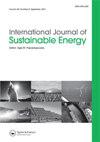Balance™ methodology – converting carbon finance to biodiversity creation
IF 2.7
Q4 ENERGY & FUELS
引用次数: 0
Abstract
ABSTRACT This paper addresses two interlinked problems in sustainable development and suggests a methodology to resolve them. The first is the reduction of atmospheric greenhouse gas emissions, especially carbon dioxide. The second is the maintenance of biodiversity. Current carbon financing and environmental stewardship mechanisms underwhelm, often diluting intended positive effects. Most existing carbon credits do not have protection after 40 years, placing projects substantially beneath the C02 radiative forcing cycle. This paper presents the ‘Balance’ approach to sustainable development, including contractual principles ensuring C02 reduction, biodiversity enhancement and financial accountability. We describe two novel measures: a carbon calculator for commercial entities, and a new metric, the Balance Unit, combining biodiversity creation with carbon credits. A case study, spanning over 20 years at the Forest of Marston Vale, is then presented. It finds an increase in tree cover, CO2 sequestration, reduction in agricultural GHG emissions, sulphur dioxide and particulate matter absorption, and annual local economic benefits totalling £UK12.83 million. Expository detail regarding the ‘Planting Principles’ practised at Marston Vale is also provided. We argue that the Balance methodology, especially the Balance Unit, enables greater measurement reliability and long-term efficacy for maintaining biodiversity and reducing GHG emissions than current carbon financing approaches.Balance™ 方法--将碳融资转化为生物多样性创造
摘要 本文论述了可持续发展中两个相互关联的问题,并提出了解决这些问题的方法。第一个问题是减少大气温室气体排放,尤其是二氧化碳。其次是维护生物多样性。目前的碳融资和环境管理机制效果不佳,往往冲淡了预期的积极效果。大多数现有的碳信用额在 40 年后都得不到保护,使项目大大低于二氧化碳辐射强迫周期。本文介绍了可持续发展的 "平衡 "方法,包括确保减少二氧化碳排放、提高生物多样性和财务责任的合同原则。我们介绍了两项新措施:商业实体的碳计算器,以及将生物多样性创造与碳信用额度相结合的新指标--"平衡单位"。随后介绍了马斯顿谷森林 20 多年来的案例研究。研究发现,树木覆盖率增加、二氧化碳固存、农业温室气体排放减少、二氧化硫和颗粒物吸收以及每年总计 1,283 万英镑的地方经济效益。我们还提供了有关马斯顿谷 "种植原则 "的详细说明。我们认为,与当前的碳融资方法相比,"平衡 "方法,尤其是 "平衡单元",在保持生物多样性和减少温室气体排放方面具有更高的测量可靠性和长期有效性。
本文章由计算机程序翻译,如有差异,请以英文原文为准。
求助全文
约1分钟内获得全文
求助全文
来源期刊

International Journal of Sustainable Energy
ENERGY & FUELS-
CiteScore
5.70
自引率
3.20%
发文量
52
期刊介绍:
Engineering and sustainable development are intrinsically linked. All capital plant and every consumable product depends on an engineering input through design, manufacture and operation, if not for the product itself then for the equipment required to process and transport the raw materials and the final product. Many aspects of sustainable development depend directly on appropriate and timely actions by engineers. Engineering is an extended process of analysis, synthesis, evaluation and execution and, therefore, it is argued that engineers must be involved from the outset of any proposal to develop sustainable solutions. Engineering embraces many disciplines and truly sustainable solutions are usually inter-disciplinary in nature.
 求助内容:
求助内容: 应助结果提醒方式:
应助结果提醒方式:


